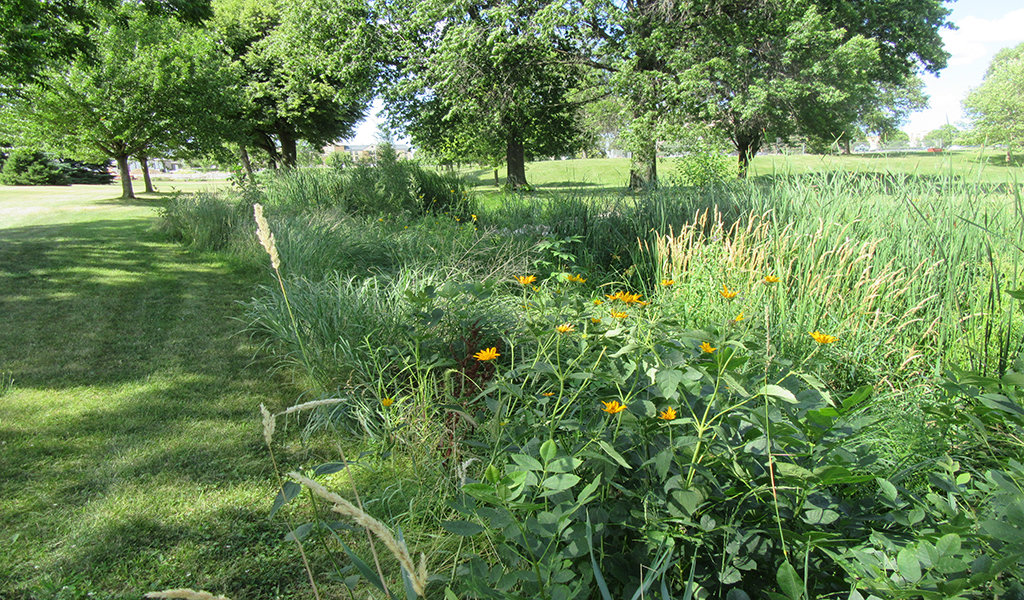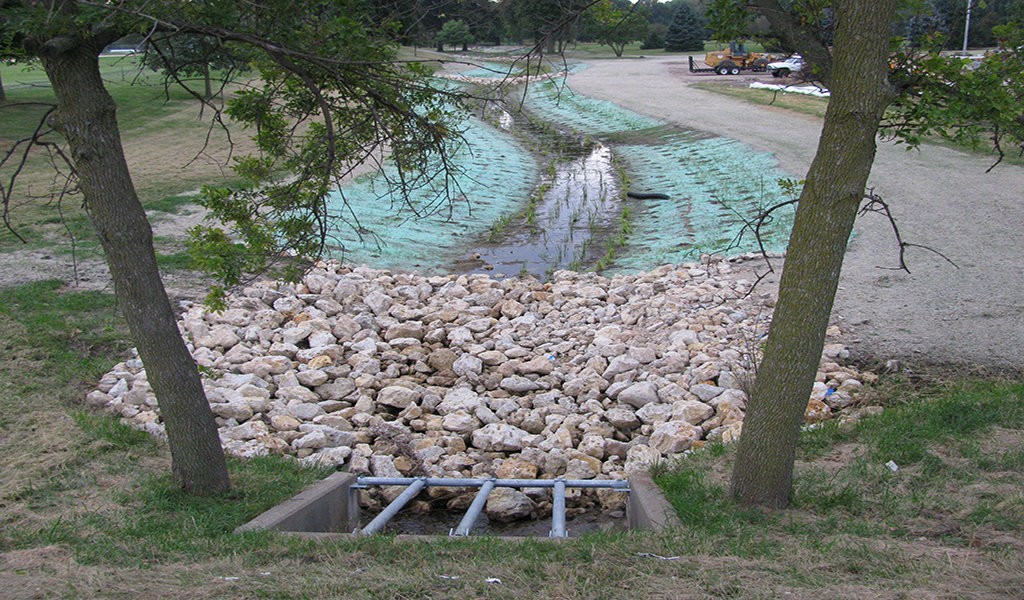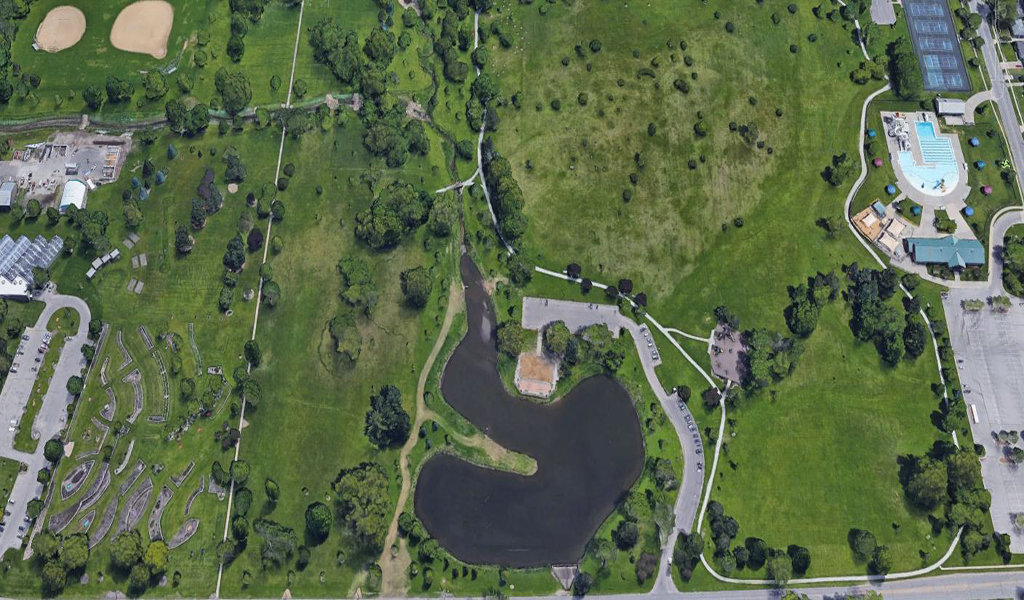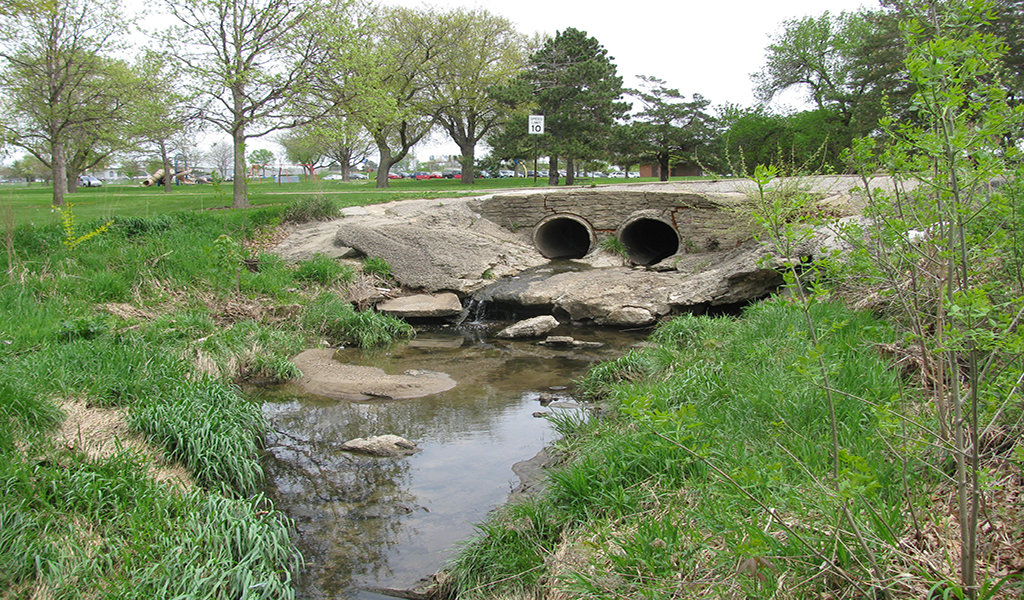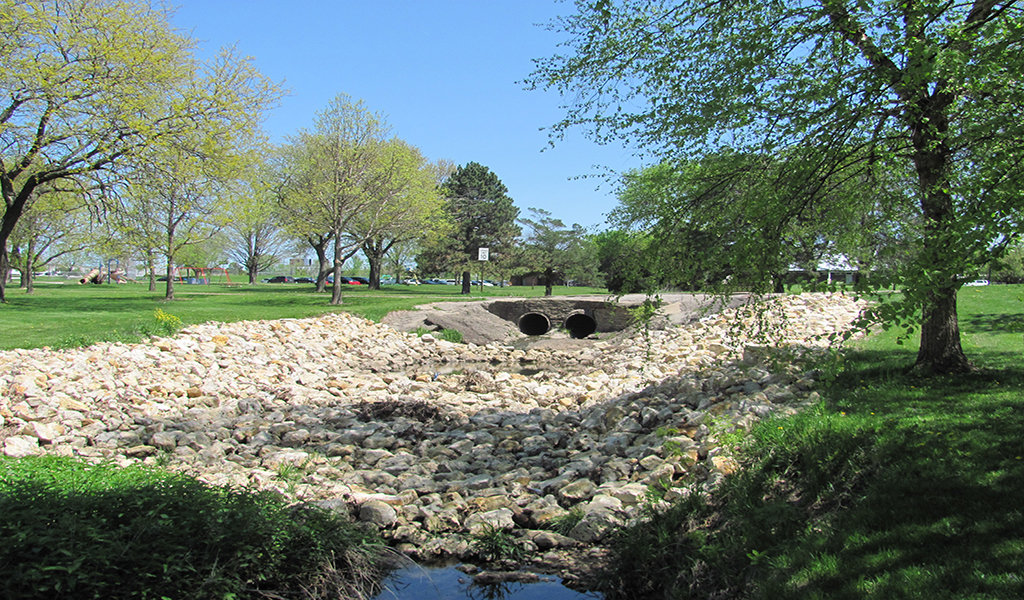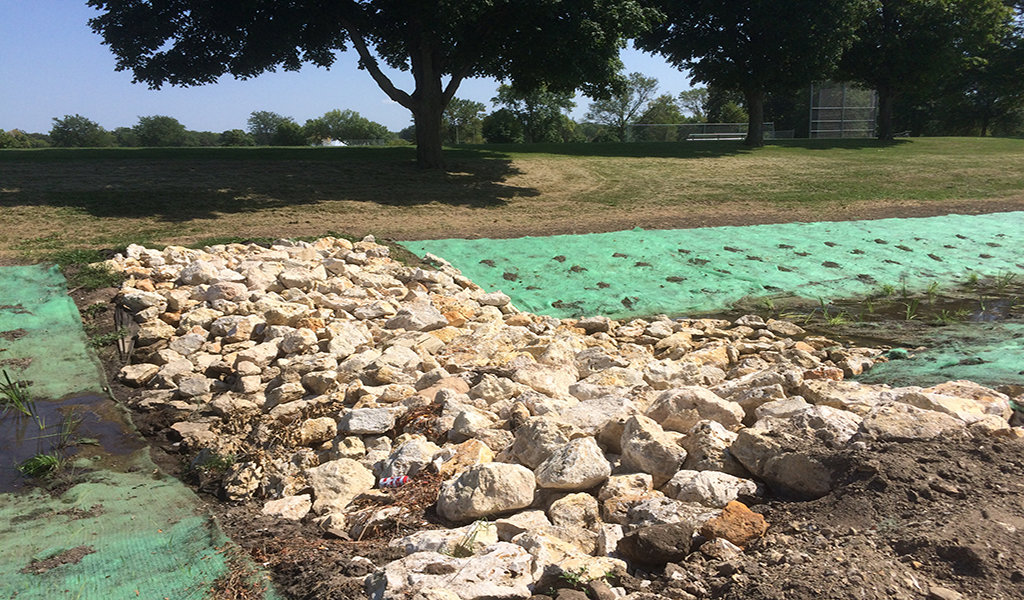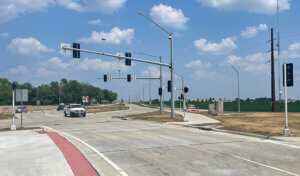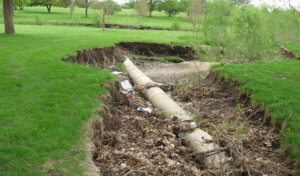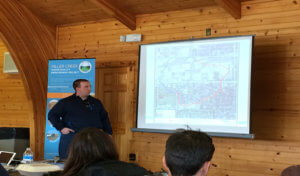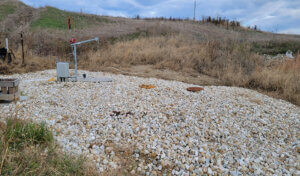
Restoration & Stabilization Required to Combat Stream Erosion
Conveniently located on the north side of Cedar Rapids, Noelridge Park is a 100-acre community park complex filled with a host of recreational amenities. These include ball diamonds, botanical gardens, a greenhouse facility, a modern playground area and splash pad, an aquatic center, tennis courts, and a trail network that ties it all together. A nearby stream feeds the park’s centrally-located pond and provides fishing and small boating opportunities.
Under previous construction efforts, portions of the stream had storm pipes installed while the remainder of the channel was filled in. Years later, both the piped and channelized sections were determined to be unstable after experiencing significant erosion, leading to sediment transport. This not only caused safety concerns along the banks but diminished the overall water quality of the park’s pond. A stream channel restoration and bank stabilization project was needed to mitigate these issues. However, the project couldn’t get off the ground without adequate funding.
Following historic floods, Cedar Rapids utilized a Clean Water State Revolving Fund loan to upgrade its Water Pollution Control Facility. At the same time, a Water Resource Restoration Sponsored Project was applied for and awarded to the city. This project allowed interest from the State Revolving Fund loan to be redirected to Noelridge Park, offering a unique funding option to restore a section of the stream.
Multiple Stream Renovation Methods Used to Improve Park’s Health
Once funding was secured, a team from Snyder & Associates modeled watershed and stream flows throughout the city and into Noelridge Park. A typical stream cross-section was designed to accommodate normal flow levels and allow overflow to the channel cross-section’s upper portions and into the floodplain.
As part of the restoration design, the stream’s length was increased, and the channel slope was decreased by incorporating meanders into the stream. Energy dissipaters for culvert outlets and rock check dams were integrated into the stream channel design to reduce the channel slope further and reduce stream velocities. Native plants, forbs, and flowers were selected, along with native seed mixtures, to help naturally stabilize the channel. By stabilizing the banks in Noelridge Park, not only should the water quality be improved, but the entire public area’s biological health has also been enhanced.
Importance of Public Education on Water Best Management Practices
Due to the high volume of visitors to this recreational destination, it’s also expected that community education on water quality Best Management Practices (BMPs) will increase. Educating the public is essential when discussing BMPs to improve watershed health since the public’s actions directly impact the quality and quantity of water in local lakes, streams, and rivers. An effective management plan cannot be implemented without the basic knowledge of what methods and policies affect the watershed’s health.
Through facilitating public engagement, our team strives to discover approaches to make our work more relevant to communities. At Noelridge Park, we worked closely with city staff who maintain the native plants to help control invasive species. After the restoration project, the stream is now in a naturally stable condition with a significant reduction in erosion. Native plants are once again thriving and help provide natural stormwater filtration, improving the stream’s overall water quality. These sustainable upgrades will ensure that the park continues to be a favorite gathering place for residents and visitors well into the future.
